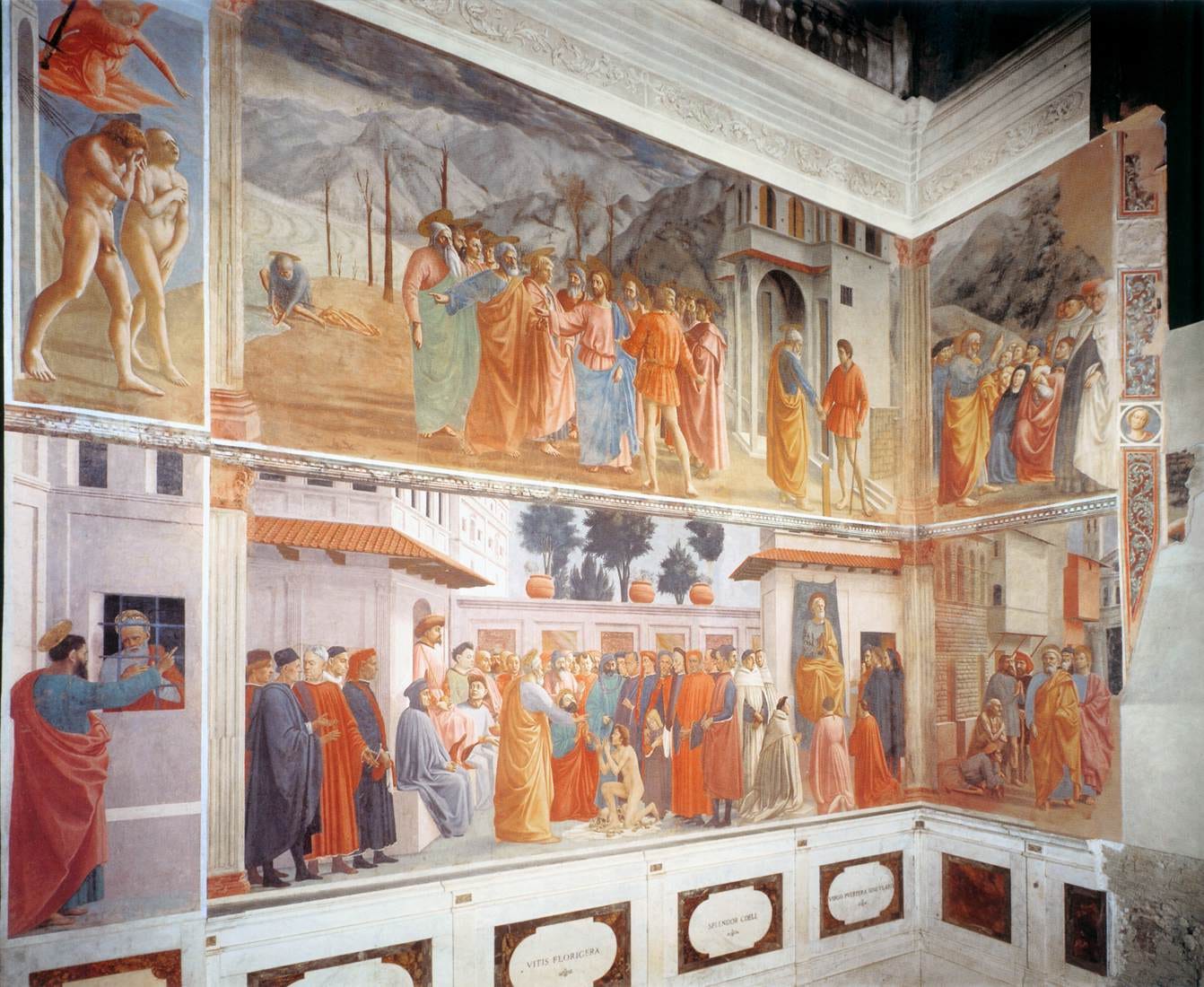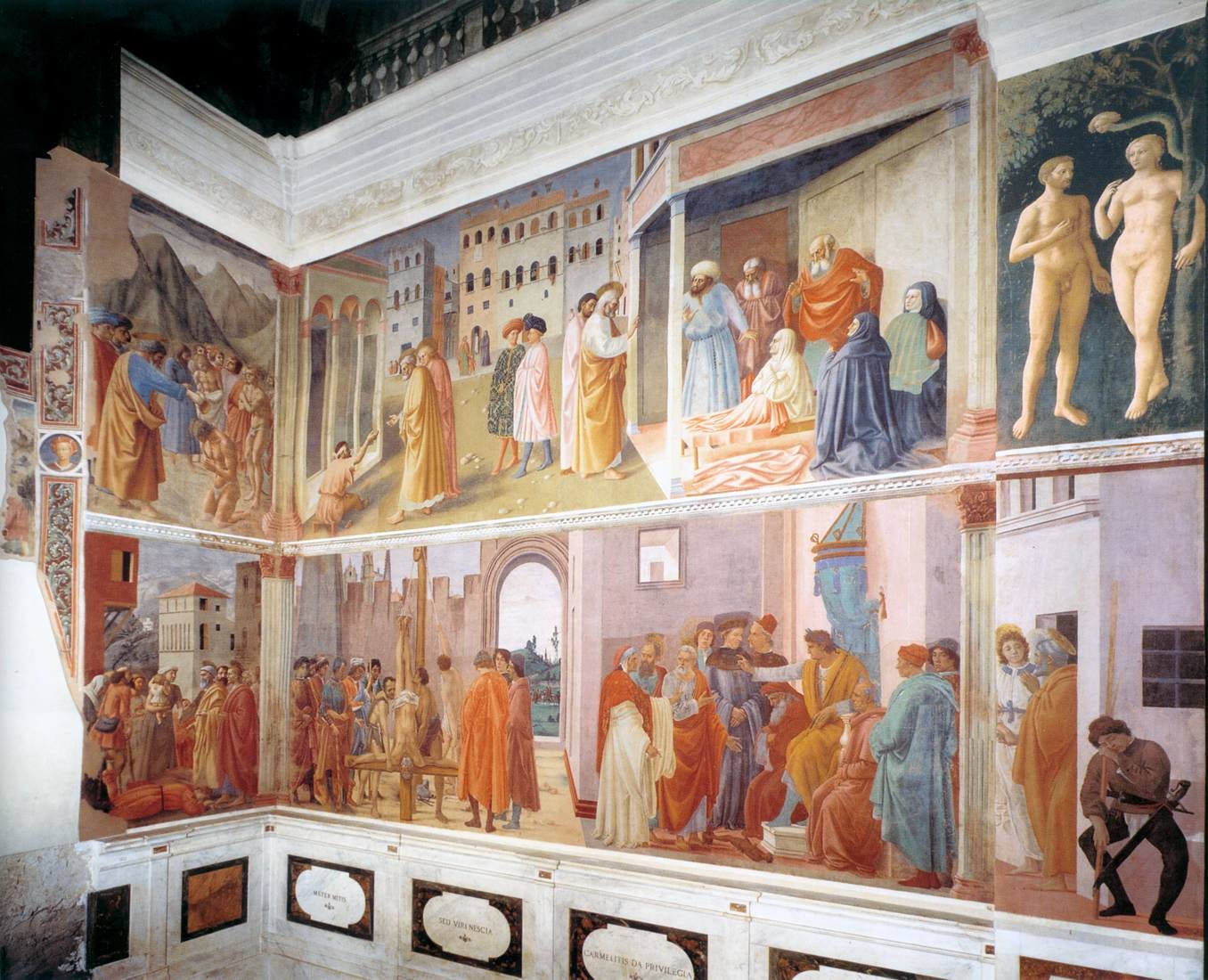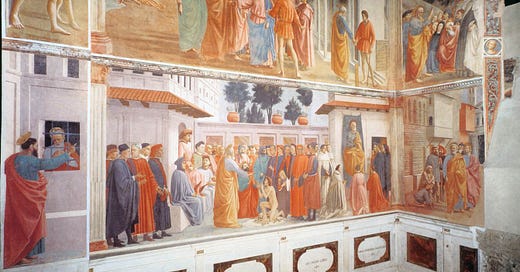
Masaccio’s The Expulsion from the Garden of Eden, executed between 1425 and 1427 for the Brancacci Chapel in Florence, represents a watershed in early Renaissance art. This seminal fresco not only redefines the narrative of biblical exile but also signals a broader transformation in artistic technique, humanistic thought, and religious symbolism. Through its innovative use of perspective, modeling of figures, and emotionally charged iconography, Masaccio reshaped visual language to express the complexities of sin, redemption, and human frailty.
In early fifteenth-century Florence, the confluence of burgeoning humanism, a revived interest in classical antiquity, and significant economic and political change provided fertile ground for artistic innovation. Masaccio, born Tommaso di Ser Giovanni di Simone, emerged as a central figure in this dynamic environment. His work in the Brancacci Chapel, including The Expulsion, was commissioned by influential patrons who sought to integrate classical naturalism with Christian doctrine. Florence’s intellectual ferment, spurred by humanists and scholars, demanded that traditional religious narratives be reconsidered in light of new perspectives on nature and the human condition (Baxandall 73; Pope-Hennessy 102).
Moreover, the political landscape, characterized by intense rivalries among powerful families and shifting allegiances, meant that art was frequently used as a medium for both personal piety and public expression. The commission of The Expulsion was as much a devotional exercise as it was a statement of civic identity and ideological renewal, reflecting the complex interplay between spiritual aspiration and the humanist emphasis on individual experience (Vasari 214; Schumacher 460).

At the heart of Masaccio’s fresco is its profound and layered iconography. The composition is deliberately divided into two registers, each articulating a distinct narrative that together comment on the nature of divine justice and human fallibility. In the upper register, the figures of Adam and Eve are bathed in a soft, otherworldly light. Their expressions, marked by grief and quiet resignation, convey both the loss of Eden and the hope of eventual redemption. This subtle interplay of light and shadow symbolizes the tension between divine mercy and the inescapable burden of sin (Baxandall 85; Pope-Hennessy 118).

The lower register, by contrast, portrays a chaotic assemblage of figures representing the human response to divine punishment. Here, Masaccio uses stark chiaroscuro and dynamic, contorted poses to evoke the physical and psychological weight of expulsion. The muscular, anguished forms, rendered with a newfound naturalism, serve as a visual metaphor for the fall from grace and the ensuing struggle between earthly frailty and the prospect of spiritual renewal (Schumacher 465). The careful placement of figures, including a kneeling individual who seems to embody contrition, bridges the gap between human despair and the possibility of divine forgiveness, underscoring the fresco’s theological complexity (King 218).
Masaccio’s technical achievements in The Expulsion are among the most influential in the history of Western art. Departing from the decorative flatness of earlier medieval works, he introduced a rigorously constructed spatial framework based on linear perspective. By establishing a vanishing point and harmonizing the proportions of his figures with the surrounding architecture, Masaccio created an illusion of depth that not only enhanced narrative clarity but also imbued the scene with dramatic realism (Baxandall 94; Pope-Hennessy 107).
The fresco’s robust figures are sculpted through the innovative use of chiaroscuro, a technique that contrasts light and shadow to suggest volume and three-dimensionality. This approach allowed Masaccio to render human anatomy with unprecedented accuracy, imbuing his subjects with physical presence and emotional intensity. Moreover, infrared reflectography and x-ray fluorescence studies have revealed preliminary underdrawings and compositional adjustments, underscoring the artist’s meticulous planning and experimental spirit (Pope-Hennessy 107; Vasari 220). Such technical mastery not only prefigured later Renaissance innovations but also set a new standard for naturalistic representation in art.
Beyond its technical innovations, The Expulsion is celebrated for its profound emotional resonance and psychological realism. Masaccio’s figures are not merely allegorical; they are vivid embodiments of human sorrow, regret, and resignation. Adam’s stooped posture and Eve’s tearful visage capture the anguish of exile in a manner that is both deeply personal and universally relatable. This attention to emotional detail marks a significant departure from the more stylized, impersonal representations common in earlier periods (Baxandall 79; King 221).
The dynamism of the composition, the interplay of ascending and descending gestures, the varied expressions of pain and despair, encourages viewers to engage with the narrative on an intimate level. The fresco’s rhythmic flow, generated by the interplay of light and shadow and the deliberate arrangement of figures, mirrors the tumultuous inner experience of guilt and loss. In this way, Masaccio’s work not only narrates a biblical event but also invites reflection on the broader human condition, where beauty and tragedy coexist in a delicate balance (Gombrich 89).
The impact of Masaccio’s The Expulsion on the course of Renaissance art cannot be overstated. Contemporary artists and later generations alike recognized the fresco’s revolutionary approach to space, form, and emotion. Its naturalistic figures and innovative use of perspective influenced a host of subsequent masters, including Fra Angelico and Michelangelo, who built upon Masaccio’s groundbreaking techniques to further explore the interplay between human emotion and divine intervention (Pope-Hennessy 124; Vasari 230).
In the decades following its creation, The Expulsion came to be seen as a critical turning point, a work that encapsulated the spirit of the early Renaissance and heralded a new era of artistic expression. Modern scholars have revisited Masaccio’s fresco to highlight its synthesis of classical and Christian ideals, arguing that it remains a powerful visual manifesto of the humanist commitment to realism and empathy (King 218; Gombrich 95). The work’s enduring legacy is evident not only in its technical influence but also in its capacity to evoke a complex tapestry of theological and existential questions that continue to resonate with contemporary audiences (Schumacher 470).
Masaccio’s The Expulsion from the Garden of Eden endures as a masterpiece of early Renaissance art, a work that fuses innovative technique, profound emotional depth, and layered theological symbolism. By breaking with medieval conventions and embracing a new naturalistic approach, Masaccio transformed the way biblical narratives were rendered, setting the stage for the Renaissance’s exploration of human experience. The fresco stands as a testament to the transformative power of art: an enduring dialogue between divine illumination and human imperfection that continues to inspire and challenge viewers nearly six centuries later.
References:
Baxandall, Michael. Painting and Experience in Fifteenth-Century Italy. Oxford University Press, 1972.
Gombrich, E. H. The Story of Art. Phaidon, 1995.
King, Ross. Masaccio and the Birth of Renaissance Art. The Art Journal, vol. 45, no. 3, 2001, pp. 210–225.
Pope-Hennessy, John. Masaccio. Phaidon Press, 1978.
Schumacher, Gottfried. The Brancacci Chapel: A Milestone in Renaissance Art. Art History, vol. 12, no. 4, 1989, pp. 455–470.
Vasari, Giorgio. The Lives of the Artists. Translated by Julia Conaway Bondanella and Peter Bondanella, Oxford University Press, 1998.




Oddly, the first thing that popped into my head seeing Eve here was Michelangelo's painting of St Bartholomew's flayed skin in The Last Judgment. As though she's been drained of life.